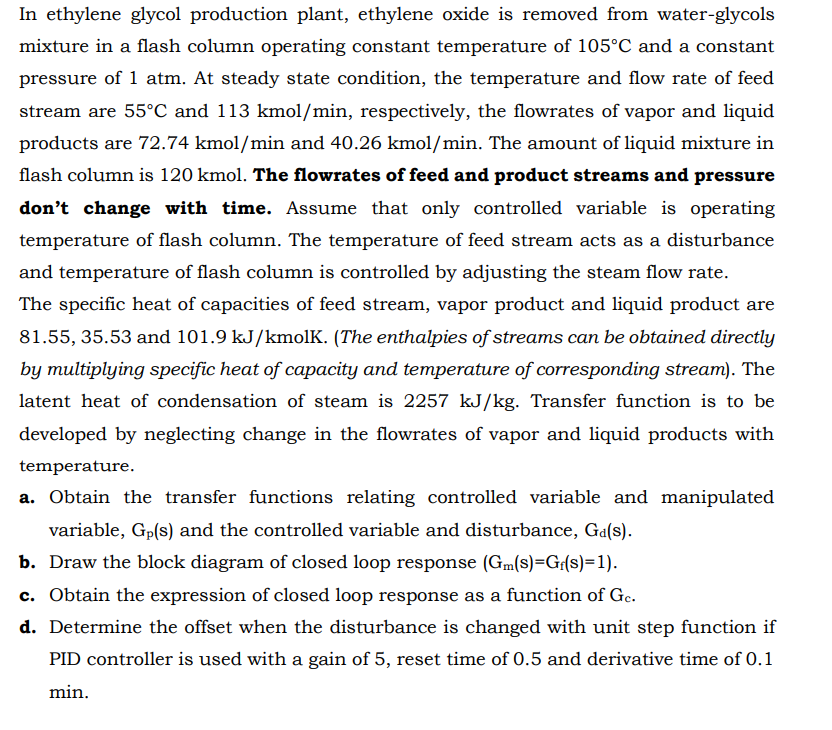Answered step by step
Verified Expert Solution
Question
1 Approved Answer
In ethylene glycol production plant, ethylene oxide is removed from water-glycols mixture in a flash column operating constant temperature of 105C and a constant

In ethylene glycol production plant, ethylene oxide is removed from water-glycols mixture in a flash column operating constant temperature of 105C and a constant pressure of 1 atm. At steady state condition, the temperature and flow rate of feed stream are 55C and 113 kmol/min, respectively, the flowrates of vapor and liquid products are 72.74 kmol/min and 40.26 kmol/min. The amount of liquid mixture in flash column is 120 kmol. The flowrates of feed and product streams and pressure don't change with time. Assume that only controlled variable is operating temperature of flash column. The temperature of feed stream acts as a disturbance and temperature of flash column is controlled by adjusting the steam flow rate. The specific heat of capacities of feed stream, vapor product and liquid product are 81.55, 35.53 and 101.9 kJ/kmolK. (The enthalpies of streams can be obtained directly by multiplying specific heat of capacity and temperature of corresponding stream). The latent heat of condensation of steam is 2257 kJ/kg. Transfer function is to be developed by neglecting change in the flowrates of vapor and liquid products with temperature. a. Obtain the transfer functions relating controlled variable and manipulated variable, Gp(s) and the controlled variable and disturbance, Ga(s). b. Draw the block diagram of closed loop response (Gm(s)=G(s)=1). c. Obtain the expression of closed loop response as a function of Gc. d. Determine the offset when the disturbance is changed with unit step function if PID controller is used with a gain of 5, reset time of 0.5 and derivative time of 0.1 min.
Step by Step Solution
There are 3 Steps involved in it
Step: 1

Get Instant Access to Expert-Tailored Solutions
See step-by-step solutions with expert insights and AI powered tools for academic success
Step: 2

Step: 3

Ace Your Homework with AI
Get the answers you need in no time with our AI-driven, step-by-step assistance
Get Started


